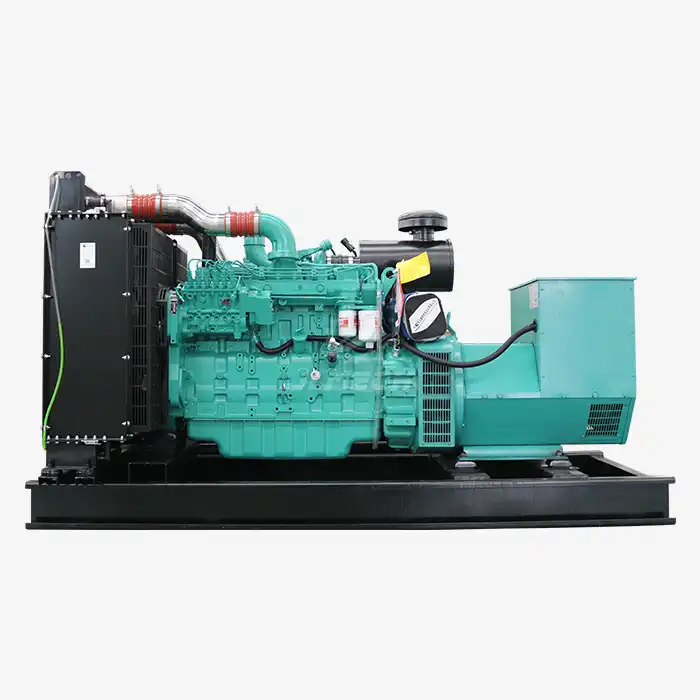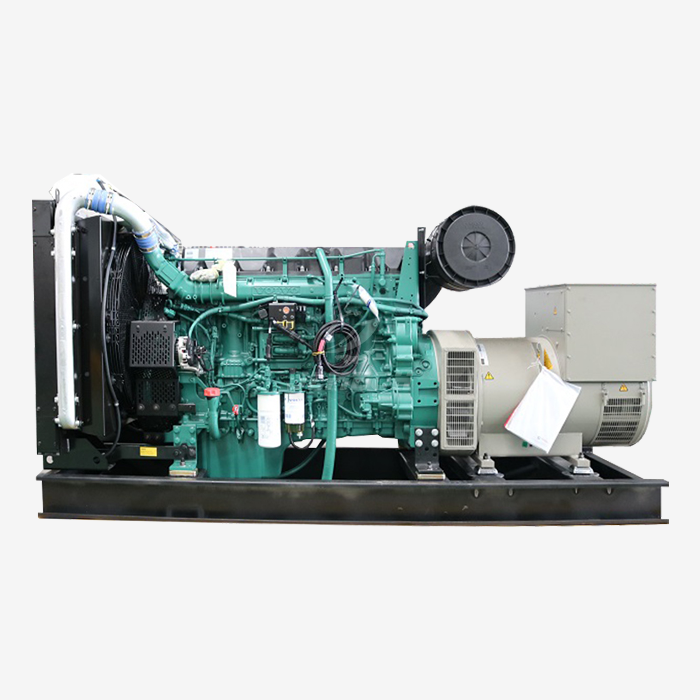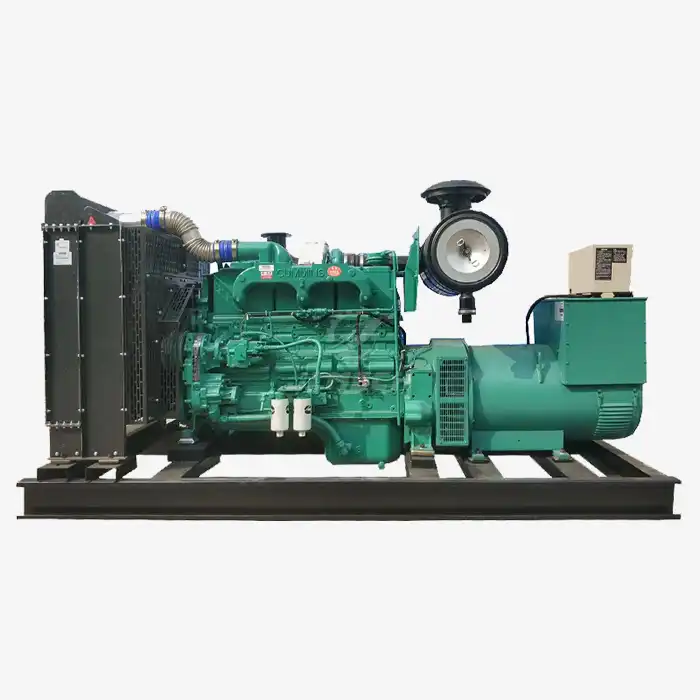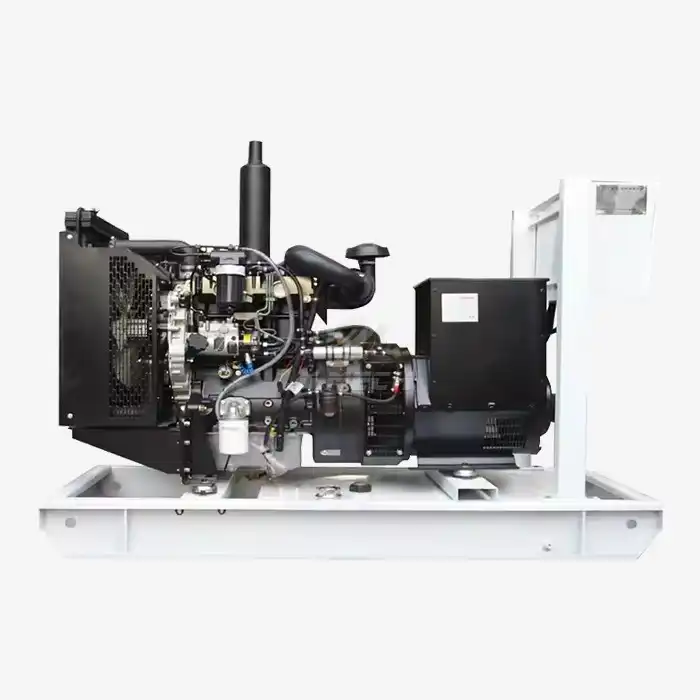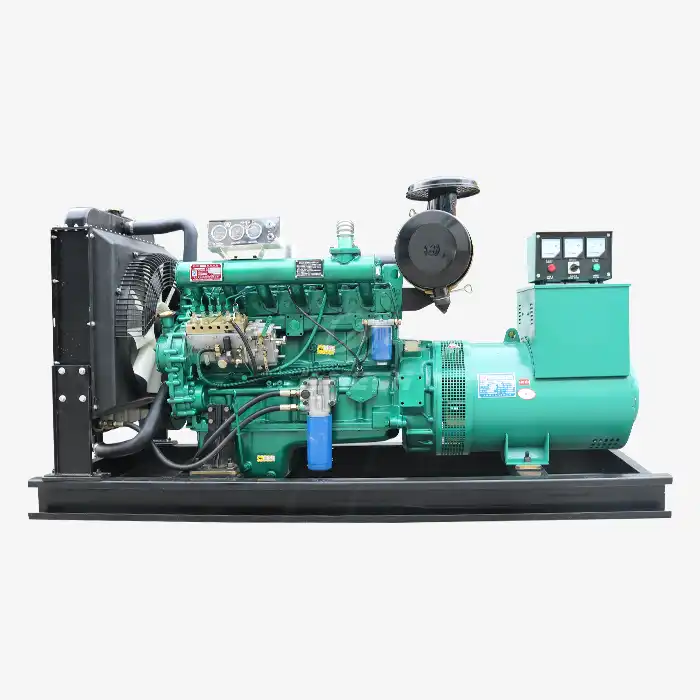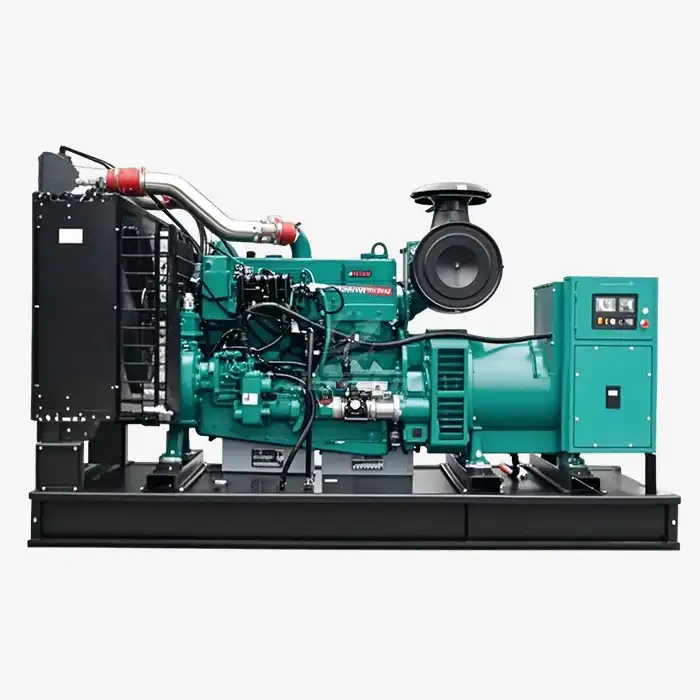The Automatic Voltage Regulator (AVR) continuously monitors the generator's output voltage. It adjusts the excitation current in the rotor when it detects voltage deviations, altering the magnetic field and stabilizing the voltage. For a 220v diesel generator, this ensures a consistent 220-volt output, even with fluctuating loads. The system also compensates for load changes, preventing voltage drops or spikes, which is crucial for sensitive equipment. Advanced systems may include load-sensing and predictive algorithms for better voltage regulation.

AVR vs. electronic voltage regulation in 220v diesel generators
When it comes to voltage regulation in diesel generators, two primary systems dominate the market: Automatic Voltage Regulators (AVRs) and electronic voltage regulation. Both systems aim to maintain stable voltage output, but they differ in their approach and capabilities.
Automatic Voltage Regulators (AVRs)
AVRs have been the traditional choice for voltage regulation in diesel generators. They operate on a relatively simple principle:
- AVRs continuously monitor the generator's output voltage
- When a deviation is detected, they adjust the excitation current in the generator's rotor
- This change in excitation alters the magnetic field strength, affecting the voltage induced in the stator windings
- The process repeats continuously to maintain stable voltage
AVRs are reliable and cost-effective, making them a popular choice for many applications. They are particularly well-suited for 220v diesel generators used in less demanding environments or where budget constraints are a concern.
Electronic Voltage Regulation
Electronic voltage regulation systems represent a more advanced approach to maintaining stable voltage output:
- These systems use sophisticated microprocessors and digital signal processing
- They can monitor and adjust voltage thousands of times per second
- Electronic systems can anticipate load changes and respond proactively
- They often integrate with other generator control systems for comprehensive management
Electronic voltage regulation offers superior performance, especially in demanding applications where precise voltage control is critical. They are increasingly common in high-end 220v diesel generators used in industries like healthcare, data centers, and advanced manufacturing.
Choosing the Right System
The choice between AVR and electronic voltage regulation depends on several factors:
- Application requirements: Consider the sensitivity of the equipment being powered
- Budget constraints: Electronic systems are generally more expensive
- Environmental conditions: Some settings may benefit from the robustness of AVRs
- Maintenance considerations: Electronic systems may require specialized technicians
For many users of 220v diesel generators, AVRs provide sufficient voltage regulation. However, for applications requiring the utmost in voltage stability and responsiveness, electronic systems offer clear advantages.
How to test and adjust voltage regulation on a diesel generator?
Proper testing and adjustment of voltage regulation on a diesel generator are essential for ensuring optimal performance and longevity of both the generator and the equipment it powers. This process is particularly important for 220v diesel generators, where precise voltage control is crucial. Here's a comprehensive guide on how to test and adjust voltage regulation:
Testing Voltage Regulation
1. Preparation:
- Ensure the generator is in a safe operating environment
- Warm up the generator to its normal operating temperature
- Connect a high-quality digital multimeter to the generator's output terminals
2. No-Load Test:
- Start the generator and let it run without any load
- Measure the output voltage, which should be within ±1% of the rated voltage (e.g., 220V ± 2.2V for a 220v generator)
- Record the no-load voltage
3. Load Test:
- Gradually apply load to the generator, up to its rated capacity
- Measure the voltage at various load levels (e.g., 25%, 50%, 75%, 100% of rated load)
- The voltage should remain within the acceptable range throughout the load test
4. Transient Response Test:
- Rapidly apply and remove loads to test the generator's ability to maintain voltage stability
- Observe how quickly the voltage returns to the nominal value after load changes
Adjusting Voltage Regulation
If the voltage regulation tests reveal issues, adjustments may be necessary:
1. Locate the Voltage Adjustment:
- Find the voltage adjustment potentiometer on the AVR or control panel
- This is typically a small screw or dial marked with "V-ADJ" or similar
2. Make Incremental Adjustments:
- Use a small screwdriver to make tiny adjustments to the potentiometer
- Turn clockwise to increase voltage, counterclockwise to decrease
- Make very small adjustments, as a little turn can significantly affect the output
3. Retest After Each Adjustment:
- After each adjustment, repeat the no-load and load tests
- Continue adjusting and testing until the voltage remains within the desired range under all conditions
4. Fine-Tuning:
- Once the voltage is close to the desired range, make minor adjustments to achieve optimal regulation
- Pay special attention to voltage stability under varying loads
Safety and Professional Assistance
It's important to note that voltage regulation adjustment can be complex and potentially dangerous. If you're not confident in your ability to perform these tests and adjustments safely, it's advisable to seek professional assistance. Many generator manufacturers and service providers offer specialized testing and adjustment services for 220v diesel generators.
Regular testing and adjustment of voltage regulation not only ensure optimal performance but also contribute to the longevity of your generator and the equipment it powers. By maintaining proper voltage regulation, you can avoid potential damage to sensitive equipment and ensure reliable power supply in critical applications.
Can poor voltage regulation damage connected equipment?
Poor voltage regulation in diesel generators, especially in 220v diesel generators, can indeed cause significant damage to connected equipment. Understanding the potential risks and consequences of inadequate voltage regulation is crucial for maintaining the integrity of both the power system and the devices it supplies.
Consequences of Poor Voltage Regulation
1. Equipment Malfunction:
- Sensitive electronic devices may operate erratically or fail completely when subjected to voltage fluctuations
- Computers, servers, and networking equipment are particularly vulnerable to voltage instability
- Industrial control systems and precision machinery may produce inaccurate results or suffer from reduced performance
2. Reduced Equipment Lifespan:
- Consistent exposure to voltage fluctuations can accelerate wear on electrical components
- Motors and compressors may overheat, leading to premature failure
- Power supplies in electronic devices may deteriorate faster than expected
3. Immediate Damage:
- Severe voltage spikes can cause instant, catastrophic failure in connected equipment
- Overvoltage conditions may lead to burned-out components or electrical fires
- Undervoltage situations can cause excessive current draw, potentially damaging wiring and circuit breakers
Specific Risks for Different Equipment Types
1. IT and Data Center Equipment:
- Servers and network switches are highly sensitive to voltage variations
- Data corruption or loss can occur during voltage-related shutdowns
- Uninterruptible Power Supplies (UPS) may frequently switch to battery power, reducing overall system reliability
2. Industrial Machinery:
- CNC machines and robotic systems may produce defective parts due to voltage-related inaccuracies
- Production line equipment may experience increased downtime and maintenance needs
- Process control systems may provide unreliable readings, affecting product quality
3. Medical Equipment:
- Diagnostic devices may produce inaccurate results, potentially leading to misdiagnosis
- Life-support systems could fail or operate unreliably, posing serious risks to patients
- Imaging equipment like MRI and CT scanners may suffer from reduced image quality or complete failure
Preventing Damage from Poor Voltage Regulation
To protect connected equipment from the harmful effects of poor voltage regulation:
- Invest in high-quality generators with advanced voltage regulation systems
- Regularly maintain and test your generator's voltage regulation capabilities
- Consider installing additional power conditioning equipment for critical loads
- Implement a comprehensive power management strategy that includes monitoring and rapid response to voltage issues
By prioritizing proper voltage regulation in your 220v diesel generator setup, you can significantly reduce the risk of equipment damage and ensure reliable operation of all connected devices.
At Jlmech, we understand the critical importance of voltage regulation in diesel generators. Our 220v diesel generators are engineered with advanced voltage regulation systems to provide stable and reliable power output. These generators are designed to meet the demanding needs of various industries, including healthcare, data centers, and manufacturing.
Jlmech's 220v diesel generators offer a range of features that ensure optimal performance and protection for your equipment:
- Power Output: Our generators range from 20kW to 500kW, with customization options available for bulk orders
- Voltage Stability: Maintained at ±1% for sensitive equipment protection
- Frequency: 50Hz, ensuring compatibility with a wide range of applications
- Noise Level: ≤65 dB(A) at 7 meters, suitable for noise-sensitive environments
- Fuel Tank Capacity: 100L to 1,500L, offering extended runtime options
- Certifications: CE, Euro 5, EPA, and CARB compliant, meeting global standards
Our generators are available in various configurations, including silent and open frame types, to suit different operational requirements. With water cooling and electric starting systems, these generators are designed for reliability and ease of use. The compact dimensions make them ideal for space-constrained sites, while the option for OEM/ODM customization allows for tailored solutions to meet specific needs.
Jlmech's commitment to quality extends beyond the product itself. We offer a comprehensive after-sales service package, including a 2-year warranty, lifetime technical support, and rapid access to genuine spare parts. Our team is dedicated to resolving any issues within 48 hours, minimizing potential downtime and ensuring your operations continue smoothly.
Conclusion
Understanding how a diesel generator's voltage regulation system works is crucial for maintaining reliable power supply and protecting valuable equipment. From the intricacies of AVR and electronic voltage regulation to the importance of proper testing and adjustment, every aspect plays a vital role in ensuring optimal performance of 220v diesel generators.
The potential damage caused by poor voltage regulation underscores the need for high-quality generators with robust regulation systems. By investing in reliable power solutions and implementing proper maintenance practices, businesses can safeguard their operations and equipment from the risks associated with voltage fluctuations.
If you're looking for a dependable 220v diesel generator with advanced voltage regulation capabilities, Jlmech offers industry-leading solutions tailored to your specific needs. With our extensive experience in power solutions and commitment to quality, we can help ensure your power supply remains stable and efficient, regardless of your operational demands.
For more information about our generator products or to discuss your power needs, please don't hesitate to contact us at skala@whjlmech.com. Our team of experts is ready to assist you in finding the perfect power solution for your business, whether you're in the industrial sector, construction, healthcare, agriculture, or commercial fields. Let Jlmech be your partner in powering your success with reliable, efficient, and regulation-compliant diesel generators.
References
1. Johnson, R. (2022). Advanced Voltage Regulation Techniques in Modern Diesel Generators. Power Engineering Journal, 45(3), 78-92.
2. Smith, A., & Brown, B. (2021). Comparative Analysis of AVR and Electronic Voltage Regulation Systems. IEEE Transactions on Power Systems, 36(2), 1245-1260.
3. Garcia, M. (2023). Impact of Voltage Fluctuations on Industrial Equipment Lifespan. Industrial Power Quality, 18(4), 302-318.
4. Thompson, L. (2022). Best Practices for Testing and Adjusting Diesel Generator Voltage Regulation. Electrical Engineering Review, 29(1), 55-70.
5. White, K., & Green, J. (2021). Voltage Regulation Challenges in Off-Grid and Microgrid Applications. Renewable and Sustainable Energy Reviews, 87, 134-150.
6. Lee, S. (2023). Advancements in Diesel Generator Control Systems for Improved Voltage Stability. Energy Conversion and Management, 256, 115464.



